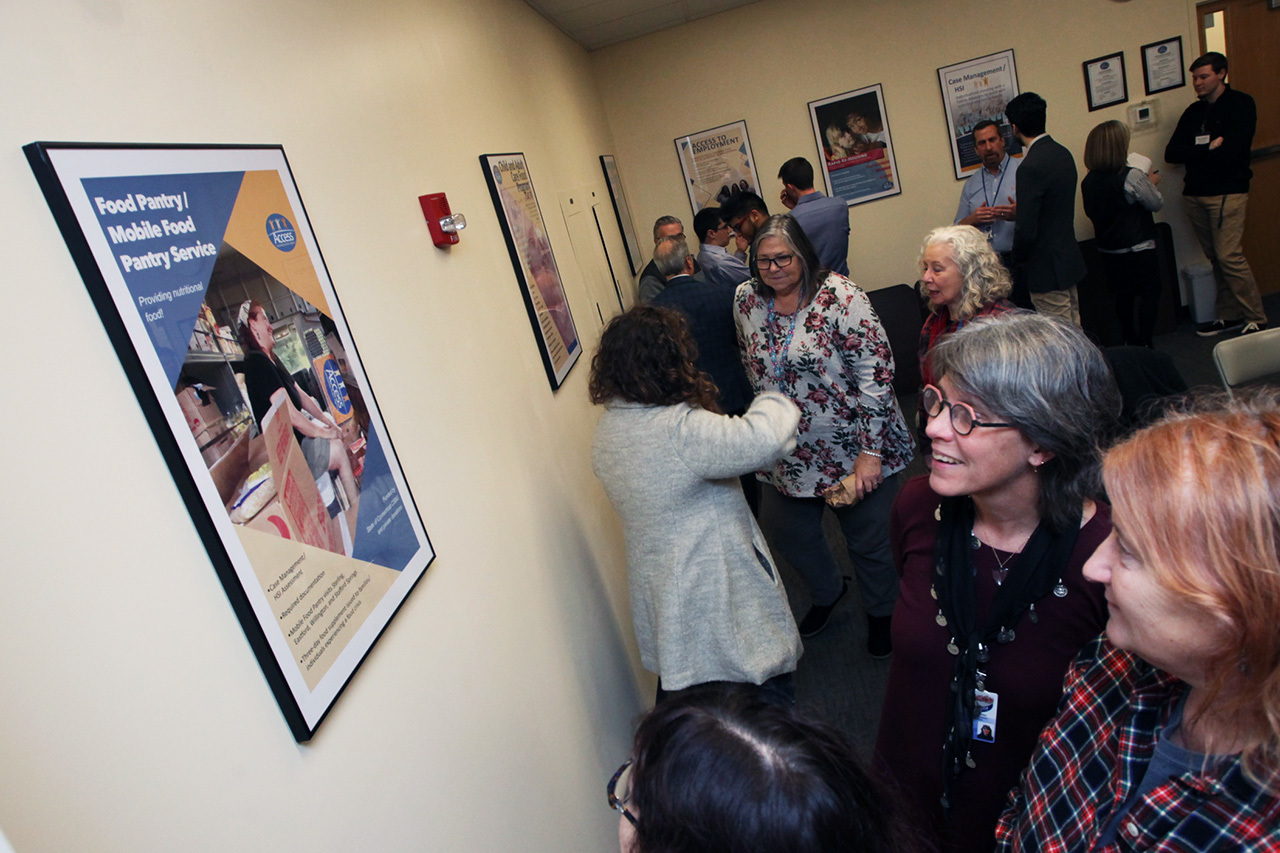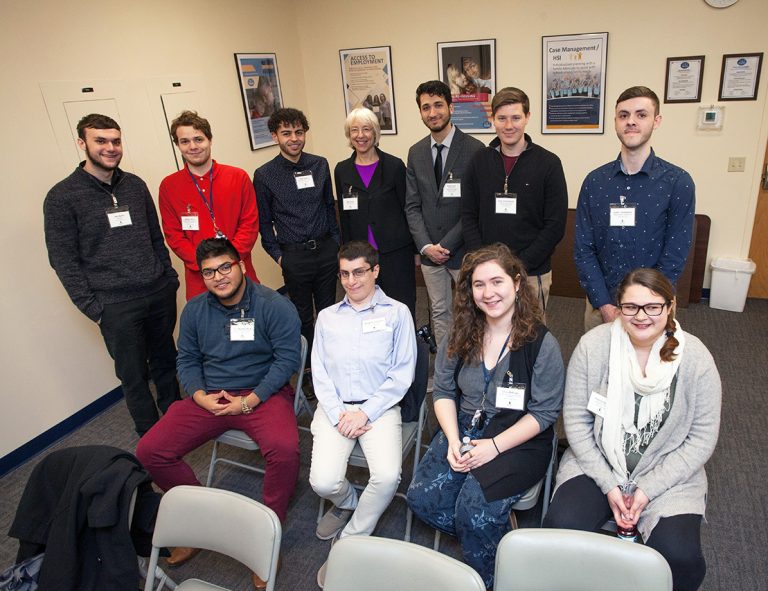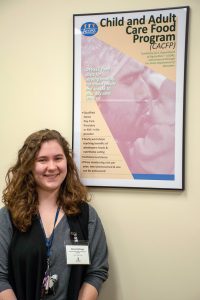


Published on December 12, 2018

Eastern and Access Agency personnel peruse the students’ final poster designs at the project’s Nov. 29 unveiling at Access.
Ten graphic design students at Eastern Connecticut State University recently concluded a major project with the Access Community Action Agency in Willimantic. As part of Professor Terry Lennox’s capstone course “Eastern Design Group,” the students created 13 posters that graphically represent the agency’s 13 community programs.
The posters will live in the agency’s conference room as official representations of Access’ services, which include assistance programs for energy, food, housing and employment. The posters will also be used externally for fundraising and outreach events.
“How do we better tell our story?” asked Kathleen Krider, Access’ senior director of community engagement, at the poster unveiling in late November. “By working with Eastern students!” she exclaimed.

Eastern Design Group students and Professor Terry Lennox (middle, back row) stand before several of their final poster designs.
Krider reflected on an email she received this past summer from Eastern’s Center for Community Engagement (CCE), in which local nonprofits and charities were invited to apply for service projects with Eastern students. Krider responded that Access could use assistance in the realm of marketing and branding.
Enter the Eastern Design Group. Each year, a new cohort of graduating seniors takes on a design-related project to serve an area community organization. This was Lennox’s 10th year bringing students into the community for such a project, and her first with Access.
“We work exclusively on real-world projects, following the same protocol students will use as professionals,” she said. That protocol involves ongoing research of the client’s needs and mission, interviewing clients, determining timetables and maintaining communication throughout the design process.

Robert John ’19 stands before one of his two poster designs.
“Working with a client isn’t as easy as one might expect,” said student Robert John ’19. “There’s constant back-and-forth, new ideas, changes and countless drafts. It’s difficult to meet everyone’s expectations, including your own.”
After receiving design input from Access program coordinators, each student designed 13 posters – one for each program – as well as numerous drafts and revisions. In the end, Access selected a poster from each student, with some students receiving multiple selections.
One of the challenges was navigating differences in artistic opinion. “Before this, all the art I’ve done has been what I like,” said Olivia DeForge ’19, who designed the poster for the Child and Adult Care Food Program (CACFP). “If the client wants something changed, you have to do it even if you might not agree. This experience taught me how to interact with and take input from a client.”
Lennox agreed, “It’s all about meeting the client’s needs by translating your own creativity, skills and training.” She also pointed out the résumé- and portfolio-building aspects of this project.
“We wanted the posters to frame the programs from a wide lens,” said Krider. “That way, as the programs change, the posters remain applicable.”
For instance, income guidelines for energy assistance may change from year to year. “If the content is too specific, it may become dated,” said Krider. “We’d like to keep these posters in circulation for several years.”

Oivia DeForge ’19 stands before her poster design.
“I’m incredibly pleased with the end result of my work, as well as the work of my peers,” said John, who designed posters for the Rapid Re-Housing program and the WIC (Women, Infants and Children) nutrition program. “It’s satisfying knowing that something you created will benefit others for years to come.”
The Eastern Design Group was started by Professor Emeritus June Bisantz. Now, Lennox, as well as Professors Tao Chen and Lora Lee, regularly lead art students through community-related graphic design projects. Past projects from their various courses include designing print materials and exhibitions for the Commercially Licensed Co-operative Kitchen (CLiCK), Windham No-Freeze Project, Generations Family Health Center, Windham Hospital, Hole in the Wall Gang Camp and other Windham-area nonprofits.
Written by Michael Rouleau